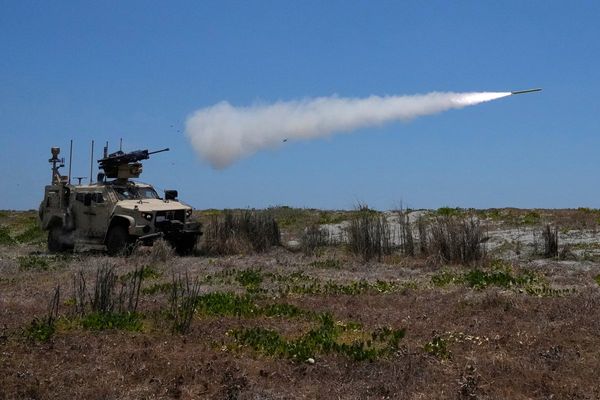
As he was sworn in as Sri Lanka’s new president on Monday morning, Anura Kumara Dissanayake heralded a “new era of renaissance” for the country. Many believe Dissanayake’s election marks a significant political pivot for Sri Lanka, which has been ruled by a rotation of the same few parties and families for decades, leading to a continuing economic recession and deep-rooted mistrust of traditional political leaders.
Swathes of the population said it was the promise of change that brought them to vote for the leftist leader for the first time last weekend.
As the head of Janatha Vimukthi Peramuna (JVP), traditionally a staunchly Marxist party, Dissanayake had remained out in the political cold for years, winning just 3.8% of the vote in the previous election.
The JVP had been dogged by its past involvement in some of the worst violence in Sri Lanka’s history, after it launched a bloody insurrection in the 1970s and 80s against those it deemed to be capitalists and imperialists. Thousands were killed and in the decades since the JVP had struggled to shake off this reputation.
But since he took over as leader of the party a decade ago, Dissanayake had sought to build a new chapter for the JVP and break away from its characterisation as a grouping of radical Marxist militants.
He won the presidential election on Sunday as part of the National People’s Power (NPP), a broader leftist coalition that has toned down some of the more extreme Marxist ideologies of the JVP and worked to make itself more palatable to the Sri Lankan electorate through its anti-corruption and pro-poor messaging.
Unlike most of Sri Lanka’s past presidents, Dissanayake was not born into a political background. Instead, his family were largely in agriculture, while his father was a low-level office worker. Dissanayake was the first student in his school to go to university.
It was while studying for his science degree that he first threw himself into the leftist politics of the JVP, joining the student wing in the late 1980s when the violent insurrection and assassinations were continuing. With government death squads targeting known JVP members, Dissanayake was forced underground for a period and his parents’ house was burned down in retaliation.
The party was banned for several years but, driven by an anger at “state-led terror”, Dissanayake remained within its ranks. He first entered mainstream politics in 2000 when he joined parliament as an MP for the JVP. He was made a cabinet minister in 2004 after his party joined the ruling alliance, but the coalition did not last and he resigned from the post a year later.
Dissanayake became leader of the party in early 2014, and not long after made a first apology for the past violence committed by JVP. In 2019, the party led the formation of a larger socialist political coalition, the NPP, along with dozens of other smaller parties, activists and trade unions, in the hope of gaining power.
It was not until economic and political disaster hit Sri Lanka in 2022 that Dissanayake’s political star began to rise. As Sri Lanka found itself almost bankrupt, without foreign reserves to import basic food, fuel and medicines, and populations began to go hungry, people began to turn against traditional parties and political leaders. A mass protest movement led to the toppling of the president Gotabaya Rajapaksa and his powerful family dynasty, who were accused of rampant corruption and misappropriation of state assets.
While the JVP denied playing a big role in the movement, known as the aragalaya (struggle), in the aftermath of Rajapaksa’s resignation, many of its leaders joined the NPP. Over the past two years the party mobilised a highly effective grassroots campaign to capitalise on the frustrations voiced by the aragalaya, and Dissanayake positioned himself as the opposite to the much-loathed political elites.
His promises of transparency, to hold previous political leaders accountable for corruption and end the culture of privilege for MPs proved popular. So too was his promise to renegotiate the terms of a $3bn International Monetary Fund loan, which is seen as coming with punishing conditions of austerity. Nonetheless, his victory was not a resounding one and he won on Sunday with just 43% of the vote, one of the lowest victory margins ever in a presidential race.
Not all, particularly among Sri Lanka’s much-maligned Tamil community, have greeted Dissanayake’s election with optimism. Historically the JVP has been a staunchly Sinhala Buddhist party, seen to work against the rights of Tamils who live in the north and east of the island, where they face economic and military repression. The JVP was supportive of the brutal actions taken against Tamil separatists during the 26-year civil war and has resisted calls for investigations into the human rights abuses that took place in the conflict.
Speaking briefly after his inauguration, Dissanayake acknowledged that he was taking on a country submerged in catastrophe on multiple fronts. “We don’t believe that a government, a single party or an individual would be able to resolve this deep crisis,” he said.







